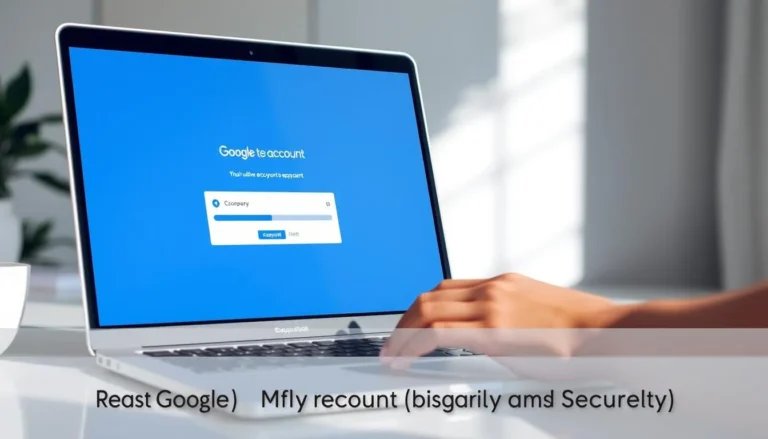How to Recover Images on Your Phone With Just One App
Have you ever had that sinking feeling after realizing you’ve deleted a photo from your phone? It’s more common than you think. Whether it was an accidental swipe or a mistaken tap, those moments can leave us feeling a bit lost. But don’t worry, recovering deleted images on phone is not as daunting as it seems. With a few tips and the right tools, your precious photos could be just a few clicks away.
How Accidental Deletion Happens
Accidental deletion of images on a phone can happen to anyone, often due to inadvertent touches or rapid swipes. Knowing how this occurs can help you prevent future accidents and build cautious habits when managing your photos.
Unintended Touches
With the rise of touchscreen smartphones, the potential for unintended touches has increased significantly. Your palm brushing across the screen or a finger swipe while scrolling through photos can easily lead to the deletion of precious memories. Always double-check before confirming deletions, and consider enabling additional confirmation steps if available.
Using Cleanup Tools
Photo cleanup tools, while beneficial for managing storage space, can sometimes lead to unwanted deletions. These applications often assess photos based on size or quality metrics, which may not align with your personal value for each image. Familiarize yourself with app settings and review photos flagged for deletion carefully.
Software Glitches
Despite advancements in phone technology, software glitches still occur. These can result from system updates or insufficient storage space, leading to unexpected deletion of images. Regularly backing up your photos to a cloud service or external storage can safeguard against permanent loss.
Human Error
Oversights such as selecting all images for deletion instead of specific files, or misinterpreting app interfaces, contribute to accidental image removal. Staying attentive and taking your time while managing photos can minimize errors. Utilizing features like undo actions can provide a safety net in case of mishaps.
While accidental deletion is often unforeseen, being informed about its common causes can greatly reduce the chance of it occurring on your device.
Simple Recovery Methods For Android
Recovering deleted images on an Android device can be straightforward if you follow the right steps. Here’s a look at some of the easiest methods to bring back those lost memories.
Check the Google Photos App
Many Android users have Google Photos pre-installed on their devices. This app often backs up images automatically. Open the app and check the “Trash” folder, where deleted items are stored for 60 days before permanent deletion. If the photo is there, you can restore it quickly.
Use a File Manager App
File manager apps like ES File Explorer can sometimes recover deleted images. These apps access the phone’s internal storage and can search for remnants of deleted files. Though not guaranteed, it’s worth exploring if the image isn’t backed up.
- Simple Steps: Open ES File Explorer, navigate to the internal storage, and check folders like .thumbnails for possible recoveries.
Install a Recovery App
Dedicated recovery apps such as DiskDigger can help recover images, even if they’re not in the trash. After downloading from the Google Play Store, scan your device, allowing the app to search for recoverable files.
- How It Works: DiskDigger scans different sections of your storage to locate recoverable files. Once found, it guides you through restoring them.
Selecting the right method depends on whether you have backup options like Google Photos active. If stored online, recovery is simple. If not, apps like ES File Explorer or DiskDigger can be lifesavers.
Easy Steps To Retrieve On iOS
Recovering deleted images on an iOS device can be stress-free if you follow these straightforward steps. Each method utilizes features built into your iPhone, so you won’t need third-party apps.
Check the ‘Recently Deleted’ Album
Your iPhone automatically moves deleted photos to the ‘Recently Deleted’ album for 30 days before permanent deletion. To restore, simply open the Photos app, go to Albums, find ‘Recently Deleted’ under ‘Utilities,’ select the photos you want back, and tap ‘Recover.’
Restore from iCloud Backup
If your iPhone is set to automatically back up to iCloud, you can restore photos from your most recent backup. Ensure your device is connected to Wi-Fi, head to ‘Settings,’ tap on your name, choose ‘iCloud,’ then ‘Manage Storage,’ and select the device under backups. Ensure your photos are backed up before performing a full device restore.
Use iTunes Backup
If you regularly back up your iPhone to a computer with iTunes, use this method to reclaim lost images. Connect your iPhone to the computer, open iTunes, and choose your device. Click ‘Restore Backup’ and select the appropriate backup containing your images.
Follow these steps for an effective image recovery on your iOS device. With options like the ‘Recently Deleted’ album and backups, retrieving lost photos is simpler than you might think.
Apps That Help In Image Recovery
Utilizing dedicated apps for image recovery can greatly improve your chances of retrieving lost images on your phone. Here are some of the top apps designed for this task.
DiskDigger
DiskDigger is a popular choice for recovering deleted images on Android devices. This app can scan both internal and external memory for recoverable images. It’s ideal for anyone who hasn’t backed up their photos to cloud services. You can find DiskDigger on the Google Play Store.
EaseUS MobiSaver
EaseUS MobiSaver is an effective app for both Android and iOS users. It recovers deleted photos, videos, contacts, and messages quickly. It’s especially user-friendly, making it suitable for individuals who want a straightforward recovery process without technical hassle. This app is available on the App Store and Google Play Store.
PhotoRec
PhotoRec is an open-source software that retrieves deleted images from various storage devices, including phones. It’s compatible with multiple platforms like Windows, macOS, and Linux, making it versatile. This is a great tool for tech-savvy users looking for a free solution. Downloadable from the developer’s website, PhotoRec requires some technical understanding due to its command-line interface.
CamScanner
Although primarily a document scanning app, CamScanner also features a simple photo recovery option. If images are scanned and stored within the app, you can easily recover them if deleted accidentally. This app suits business users who manage numerous documents and images. Available on both Android and iOS.
These apps offer a range of options based on usability, platform compatibility, and technical requirements, each providing a practical solution for restoring deleted photos.
FAQ – Frequently Asked Questions About Recovering Deleted Images on Phones
How can I recover deleted images from my Android phone?
You can use Google Photos’ Trash folder, File Manager apps like ES File Explorer, or recovery apps like DiskDigger to retrieve deleted images.
What is the ‘Recently Deleted’ album on iOS?
The ‘Recently Deleted’ album temporarily stores deleted photos for 30 days, allowing you to restore them easily from the Photos app.
Are there any free apps available for image recovery on my smartphone?
Yes, PhotoRec is a free, open-source option. It’s slightly more technical but effective for retrieving deleted images from various storage devices.
Can I recover images that were deleted months ago?
If they’re deleted from the cloud backup like iCloud or Google Photos, recovery within 30-60 days is possible, otherwise, using powerful recovery apps might help find older deleted files.
Are image recovery apps safe to use?
Most reputable apps like EaseUS MobiSaver are safe, but always download from official stores or direct websites and review permissions and user reviews before installing.
What should I do first if I accidentally deleted an image?
Immediately check your ‘Recently Deleted’ folder on iOS or the Google Photos Trash on Android, as they provide the quickest recovery options without the need for external apps.






